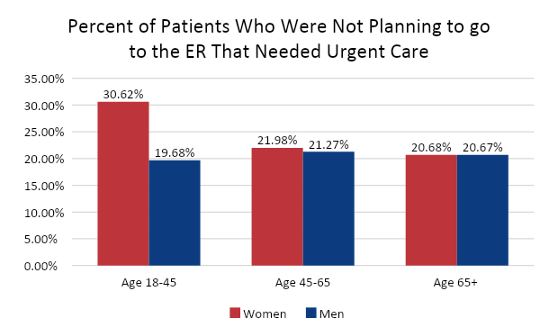Triage nurses use Schmitt-Thompson protocols to determine which symptoms are serious. However, sometimes symptoms that patients don’t think are serious, such as headache or chest pains, might actually require emergency medical assistance due to their severity. By following protocols, nurses can catch early warning signs of more critical conditions and direct patients to the ER when necessary.
When deciding on a course of action for any particular patient, triage nurses need to consider many elements of the caller. Each individual has their own risk factors – age, lifestyle, chronic illnesses, surgeries, medications, and more – which need to be considered before deciding the appropriate disposition. It is important to recommend the appropriate level of care for each person’s individual needs.
We studied patients who were instructed to go to an emergency department after they told a nurse they had not planned on going. We collected data from 230,000 telephone calls from our nurse triage call center between January 2020 and October 2020.These results exclude cases where the nurse instructed the patient to call 911. The commonly missed symptoms are as follows:
Abdominal Pain – There are many possible causes of abdominal pain, which may include stomach or belly pain. Mild stomach pain is often not serious and can be caused by an upset stomach, gas pains, or eating too much. Acute pain, localized pain, or pain that is constant and lasts for more than two hours may be indicative of an issue with an organ in the abdomen. The location of the pain may give the triage nurse an indication of what could be causing the symptoms.
Some examples of cases where a nurse may tell the patient to go to the ER include cases where severe stomach pain occurs, the pain is constant and lasts more than 2 hours, the patient is pregnant, or if the patient continues to get worse. Stomach pain is more likely to be serious for patients over the age of 50.
Breathing Difficulty — While it is always alarming to hear a patient that is short of breath or wheezing, the triage nurse must remember to remain calm; sometimes this can be the patient’s normal breathing pattern. The triage nurse must ask what the patient’s baseline breathing is and determine the difference and subsequent severity.
Nurses will often direct patients to the ER, if any of the following incidences occur: new or worse than normal shortness of breath, difficulty breathing that is accompanied by chest pain or extreme and unexplained fatigue, comorbidities, such as COPD, CHF , or history of blood clots in legs or lungs.
Chest Pain — Chest pain is a symptom that can range from benign, or very mild, to a life threatening cause. When a triage nurse hears the patient say they have chest pain, she will first rule out the “ABC’s”- problems with their “Airway, Breathing or Circulation.”
Using triage protocols, a triage nurse may direct a patient to the ER in cases such as: pain radiating to arm, pain in shoulder or jaw, pain that lasts more than 5 minutes and feels heavy or crushing, the chest pain is not relieved by nitroglycerin, or there has been major surgery in the previous month.
Our telephone triage nurses save lives by asking the right questions and following the proper protocols. By assessing patient symptoms, nurses were able to provide the correct level of care to patients who missed the severity of their symptoms. Below are the results of patients who had not planned to go to the ER that needed urgent care assistance.

A demographic breakdown of patients who were instructed to seek urgent medical attention and told the triage nurse that they had not planned on going to the ER prior to the call.
Click here to create an account, and you will have access to the full spectrum of Covid telephone nurse triage care. The Schmitt-Thompson disposition protocols aid our nurses in providing quality care to patients. We also offer free courses for nurses in our Learning Center.
Contact us today to set up a nurse triage system for your patients. We will discuss your needs and set up a customized plan that works best for your organization and your patients.





